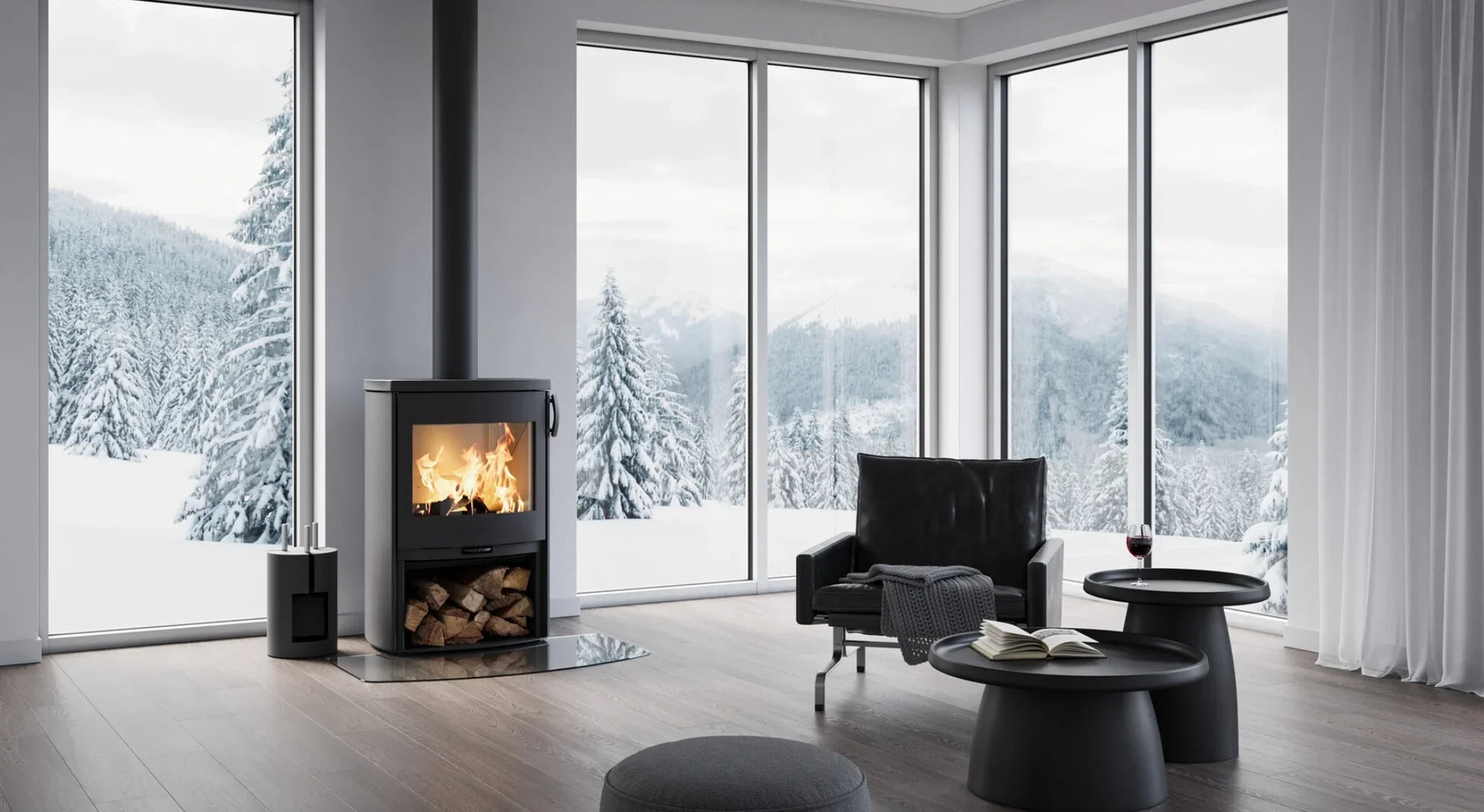
Why Is My Log Burner Smoking? Causes, Fixes & Prevention
When Log Burners start smoking, it’s less “cosy night in” and more “chimney experiment gone wrong.” The short answer? Your stove’s either hungry for dry wood, better airflow, or a good clean. Stick around—we’ll unpack the smoky culprits and simple fixes to bring back the snug glow.
Help! My Log Burner is Smoking
Picture this: you’ve just lit the fire, kettle’s on, and you’re ready to sink into the sofa. Suddenly, instead of a gentle crackle, your living room fills with smoke. Not exactly the cosy autumn evening you had in mind, is it?
It’s a common problem. Even the best Log Burners can occasionally sulk and puff back smoke. The good news is that most of the causes are fairly ordinary — and once you know what’s behind it, the solution is usually straightforward.
So, before you give up and throw another jumper on, let’s dig into the top reasons your log burner might be misbehaving.
The Top 3 Reasons for a Smoking Stove
There are plenty of possible explanations, but three culprits are responsible for most smoky disasters. Think of them as the “big three” to check first.
A Chimney Blockage
One of the most likely issues is a blockage. Chimneys are magnets for soot, tar-like creosote, and sometimes even wildlife. Birds, for reasons known only to themselves, love to set up home in a chimney flue.
When the passage is blocked, the smoke has nowhere to go but back into your living room. If you’ve noticed more soot than usual, stubborn smoke, or even a strange smell, your chimney may need urgent attention.
A professional sweep is the safest option here. In fact, most experts recommend at least one sweep a year — ideally before the heating season starts. It’s a simple preventative step that saves a lot of smoky drama.
Poor Quality Wood
If your firewood could double as a damp sponge, you’re in trouble. Wet or unseasoned logs are the number-one cause of excess smoke. Instead of burning cleanly, they hiss, smoulder, and fill the room with thick, unpleasant fumes.
The rule of thumb is simple: use wood with less than 20% moisture. You can buy a cheap moisture meter to test your logs, or rely on signs like cracks in the grain, a lighter feel, or a hollow “clack” when two logs knock together.
Think of it this way: good wood is like good wine. It needs time to mature. Hardwood can take up to two years to season properly, while softwood is usually ready in under a year.
Incorrect Airflow
The third common reason is airflow. Fires need oxygen to burn well. Without enough, your stove will sulk, struggle, and send smoke back inside.
It’s tempting to pack the firebox tightly or shut the vents too soon, but both starve the fire. Modern stoves have primary and secondary air controls — understanding how they work makes all the difference.
A steady flame with a bright orange-blue glow is the sweet spot. Too little air and you’ll get sluggish smoke. Too much and the logs will burn unevenly. It’s a balancing act, but one worth learning.
What to Do Immediately When Your Stove Smokes
So, the room is already smoky. What now? First, don’t panic. With a few quick moves, you can keep things under control and stop the situation getting worse.
Safety First: Open Windows and Shut Down the Stove
Start by getting some fresh air in. Open a window or an outside door straight away to let the smoke out. It may feel counterintuitive in winter, but your health and safety come first.
Next, gently shut down the stove’s vents to calm the fire. This reduces the amount of smoke produced while you figure out what’s causing the problem. If you suspect a blockage or draft issue, don’t relight until you’re certain it’s safe.
Your Quick Fix Checklist
When smoke makes an unwelcome appearance, run through this simple checklist:
-
✅ Open the vents fully and check if airflow improves
-
✅ Look outside — is smoke actually leaving the chimney?
-
✅ Inspect the wood. If it’s damp or green, swap it for seasoned logs
-
✅ If the problem persists, call in a professional sweep or stove technician
In other words: keep calm, clear the air, and don’t keep forcing the fire if it refuses to behave.
Preventing the Problem from Happening Again
Here’s the good news: most smoking issues are preventable with a bit of planning. Think of it as giving your log burner a routine MOT.
First up: chimney care. A sweep once a year should be non-negotiable. Not only does it reduce smoke, but it also prevents dangerous creosote build-up — a leading cause of chimney fires.
Secondly, treat your firewood properly. Store it off the ground, under cover, and in a well-ventilated stack. A messy pile dumped in the rain is a guaranteed recipe for soggy, smoky logs.
Finally, learn the “language” of your stove. Every model behaves slightly differently. Spend a little time adjusting the air controls, noticing the flame colour, and experimenting with different wood sizes. It’s a bit like getting to know a musical instrument — the more you practise, the better it performs.
A Final Word
Smoke pouring out of your log burner might feel like the end of a cosy night, but it doesn’t have to be. More often than not, it’s down to something as ordinary as damp wood, poor airflow, or a chimney that needs a clean.
By tackling those culprits, reacting calmly when smoke appears, and keeping on top of regular maintenance, your log burner will reward you with warmth and atmosphere instead of unwanted fog.
So next time you spark up the fire, you can settle in with confidence, knowing your stove is ready to glow — not to smoke.
Other content we think you'll love
- What Are the New Log Burner Rules in the UK?
- Why Your Log Burner is Smoking: Causes, Fixes, and Safety Tips
- Why Does My Log Burner Smell?
- Why Your Log Burner Is Burning Too Fast (And How to Fix It)
- Why Does My Log Burner Keep Smoking? Common Causes & Fixes
- Why Your Log Burner Won’t Stay Lit (and How to Fix It)
- Can You Safely Put a TV Above a Log Burner?
- Keeping Your Baby Safe Around Log Burners
- Can You Safely Install a Log Burner Near Glass?
- Why Your Fireplace Smells Like Burning Plastic (and What to Do About It)
- Log Burner Carbon Monoxide: Stay Safe from the Silent Killer
- Log Burner Law UK: The Complete Guide for Homeowners

